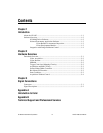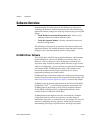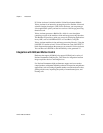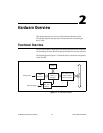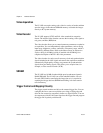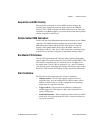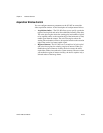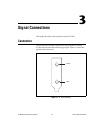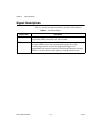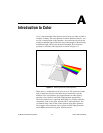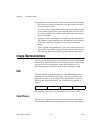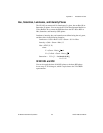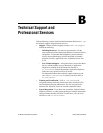Chapter 2 Hardware Overview
© National Instruments Corporation 2-3 NI PCI-1405 User Manual
Acquisition and ROI Circuitry
The acquisition and region-of-interest (ROI) circuitry monitors the
incoming video signals and routes the active pixels to the SDRAM
memory. The NI 1405 can perform an ROI acquisition on all video lines
and frames. In an ROI acquisition, you select an area within the acquisition
window to transfer to the PCI bus.
Scatter-Gather DMA Controllers
The NI 1405 uses three independent onboard direct memory access (DMA)
controllers. The DMA controllers transfer data between the onboard
SDRAM memory buffers and the PCI bus. Each of these controllers
supports scatter-gather DMA, which allows the DMA controller to
reconfigure on-the-fly. Thus, the NI 1405 can perform continuous image
transfers directly to either contiguous or fragmented memory buffers.
Bus Master PCI Interface
The NI 1405 implements the PCI interface with a National Instruments
custom application-specific integrated circuit (ASIC), the PCI MITE. The
PCI interface can transfer data at a maximum rate of 132 Mbytes/s in
bus master mode. The NI 1405 can generate 8-, 16-, and 32-bit memory
read and write cycles, both single and multiple. The interface logic ensures
that the NI 1405 can meet PCI loading, driving, and timing requirements.
Start Conditions
The NI 1405 can start acquisitions in a variety of conditions:
• Software control—The NI 1405 supports software control of
acquisition start. You can configure the NI 1405 to capture a fixed
number of fields or frames. Use this configuration for capturing a
single frame or a sequence of frames.
• Trigger control—You can start an acquisition by enabling the
external trigger line. This input can start a video acquisition on a
rising or falling edge.
• Frame/field selection—With an interlaced camera and the NI 1405 in
frame mode, you can program the NI 1405 to start an acquisition on
any odd or even field.



